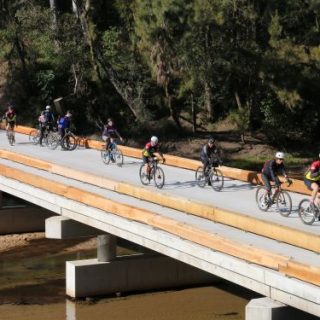Consultant Spotlight: Don Wallace
The field of Built Heritage really encompasses the full range of understanding heritage places and managing them in a way that conserves what makes them special.
We recently sat down with Principal Built Heritage Don – our resident expert in all things Built Heritage – to discuss the significance of the discipline in cultural heritage assessments.

How did your interest in working with built heritage evolve?
I studied architecture at Curtin University in the early 1990s where an undergraduate requirement was that every aspiring architect should have some understanding of the heritage and its identification and management.
So I was lucky enough to get that first experience at university—assessing the heritage significance of several places and writing a conservation management plan for a place of our choice—in my case the rather unassuming Fremantle Workers’ Social and Leisure Club where a key part of the significance of the place is social rather than architectural. So from that very early start I began looking at places holistically and trying to understand all the things that make them special.
I was then fortunate to start work as a student architect with WA’s state government department charged with looking after some really interesting and important places like Fremantle Prison, Government House, Perth, the Maritime Museum, among others.
Can you tell us about some successful outcomes you have had working in built heritage and how your discipline has played a key role?
As a discipline specialist on larger, more complex projects you realise that every discipline is crucial and that’s where communication and coordination comes in. A key component of that is understanding what and when your inputs are necessary and useful but also when you need to both inform and draw upon other specialists—whether that be fire safety, mechanical engineering or landscape design to name a few—so that the options are creatively explored and the outcome is coordinated and successful on all fronts.
This may sound odd but sometimes the successful outcome is one that can be seen yet sometimes the success comes in knowing that a less than optimal outcome was avoided. Something as seemingly ordinary as the detail of a handrail of a stair, for example, can inspire as it quietly demonstrates the coordinated knowledge of a range of specialists, design integrity, trades and specialists and their coordinated knowledge in achieving a client’s development aspirations.
Another rewarding part of my role is helping clients understand opportunities and constraints early in the site selection and analysis phase. My experience is that many potential obstacles can be resolved relatively easily and effectively if identified early thus limiting the risks and costs of development. Most clients also find it beneficial to understand the design and approvals process so that they can make informed decisions from the outset—potentially saving time and money.
What are key services that Biosis deliver in built heritage, and do you have any specialities within the broader field?
Biosis’ expertise across Aboriginal cultural heritage and historical archaeology is well known. The field of ‘built heritage’ really encompasses the full range of understanding heritage places and managing them in a way that conserves what makes them special.
This includes heritage assessment (identifying why a place is important), conservation planning (providing frameworks for managing the conservation of places), impact assessment (identifying and mitigating heritage impacts arising from development), heritage interpretation (the ways we present a place’s significance and express stories in engaging ways), general heritage advice to owners on the opportunities and constraints associated with a site, and the practical physical conservation of buildings and landscapes in works programs and maintenance planning.
Coming from an architectural background, buildings and their care are a core focus but having worked on a range of places—landscapes, buildings, industrial sites—over the last three decades I apply my experience and skills across the spectrum from rural landscapes to dense urban centres.
Is there any key legislation in NSW that is relevant for clients to be aware of affecting projects?
Commonwealth laws aside, the two key pieces of heritage legislation that affect landowners are the Heritage Act 1977 and the Environmental Planning and Assessment Act 1979. Of these, most clients will deal ordinarily with the EP&A Act as its heritage provisions are built into Local Environmental Plans (LEPs). Some clients do have properties listed on the State Heritage Register or with significant archaeology so the Heritage Act provisions come into play.
I guess the thing that surprises most clients is that although their site may not be listed as a heritage item itself, heritage is still a consideration as virtually all LEPs provide for the assessment of a development on unrelated heritage items that are near the development site. Statements of Heritage Impact are a common requirement of the environmental assessment approvals process.
For aspiring heritage consultants interested in specialising in built heritage, what advice would you give regarding skill development and career possibilities?
The great benefit I’ve had and that continues to inspire me has been exposure to so many places and buildings types in a range of environments that have varying heritage values from scientific to aesthetic to social value. And also the privilege of working with experts in the field over time and learning from them.
Also to see how buildings age and the significance of places deepen over time. Such places include aerodromes, schools, churches, power plants, war memorials, defence establishments, apartment buildings, houses, roads, bridges, railways, hospitals, government buildings…it goes on … but I’m always curious about places that are new to me.
My advice would be to treat every visit to a new place as a privilege and a learning opportunity and to do two things: try and pin down what is special about the place, and ask how can I influence how the place is looked after in both the short term and the long term—and by long term I mean forever. I mean what other sort of work gives that long-range perspective.






